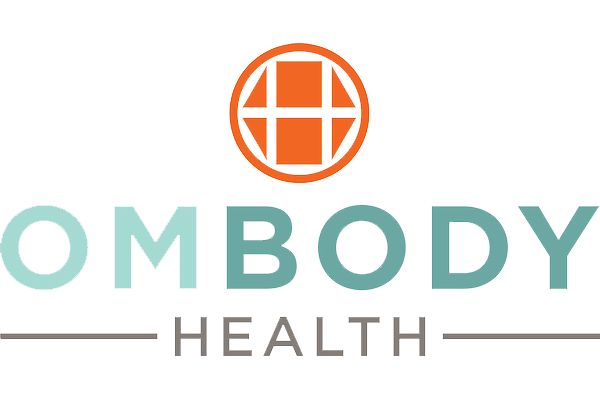Do you pay regular visits to yourself?
– Rumi
The Problem with Selflessness
Do you often feel like you have over-extended yourself to please others? Or that you put the needs, wishes and feelings of others before your own? Does this make you feel resentful, frustrated, overwhelmed, or depleted? Do you feel disconnected from what your body, mind and soul need to feel your best?
If you were raised in the US, you likely learned at a young age that selflessness and altruism are noble acts, virtues. Many of us were reprimanded for being selfish with our things and time and taught that we should be more concerned with the needs and wishes of others than with our own.
What are the repercussions of this? Adults who are busy trying to manage the expectations and feelings of others at the expense of taking care of ourselves. Many of my clients report feeling guilty for “putting themselves first”. Most leadership books claim that to be a good leader, one must be selfless. I’ve spent much of my adult life in an attempt to unlearn these deeply engrained, cultural beliefs that cause me to feel depleted and to ignore my inner compass.
While I definitely don’t condone selfishness in the sense of being inconsiderate of others, I do believe that one must be concerned first and foremost with their own pleasure and experience of life. So many of us were taught to believe that we are not only in control of, but responsible for the way others feel. We are not. We only have control over how we feel.
In my Vipassana training, a 10-day silent course during which we sat still in meditation for about 10 hours per day, the instructor, Goenkaji, teaches that as adults we are responsible for 100 percent of our feelings and mental suffering—our sadness, anger, anxiety, fear, discomfort, jealousy, hatred, comparison, worry, anticipation, and mental/emotional stress—not 50 percent, not 75 percent, not 99 percent, but 100 percent. For many of us, this is a groundbreaking statement, challenging the mental and emotional framework we’ve been conditioned in.
While this assertion initially jolted and perplexed me — bringing up shame as I reflected on situations when I had blamed someone or something (my job, my family, my upbringing, my lack of time, life) for the way that I felt, and anger as I reflected on how people do in fact inflict pain and suffering on others all the time (slavery, genocide, racism, sexism, homophobia, murder, gaslighting, the list goes on…) — I have since come to find this perspective helpful and empowering…
Not because it has eliminated mental suffering in my life, but because it reminds me (I still forget at times) that I am in the driver’s seat of healing the individual and generational trauma and cultural conditioning that influences my suffering.
Yes, only I can heal my own mental suffering. It is up to me the take stock of and address the way that I am feeling, from the inside out, rather than falling victim to blame or judgement and waiting for some external circumstance to shift so I can feel better, be happier, or suffer less.
Again, we should not expect that in adopting the outlook that we are 100 percent responsible for how we feel that we will not experience suffering. We’re human…we develop attachments and expectations, which are at the core of all suffering –attachment to things and people that are ultimately temporary (it all is), and unmet expectations that we place on ourselves, others and our life. And we instinctively blame others and circumstances to protect our self-image.
Also, as I mentioned, circumstances outside of our control DO have the power to inflict pain on us. And sometimes we need to feel that pain for some time before we’re ready to heal from it.
But, all that said, when we’re ready, we can take responsibility for our mental suffering and in doing so take our power back, which brings me back to why was inspired to write this piece…
All of which requires self-care and practice. Which means that we must challenge the belief that selflessness is a good thing. Why? Because a selfless approach trains us to live outside of ourselves. In time we become so focused on the other and our inborn faculty to be keenly sensitive to what our own bodies, minds and souls need diminishes. We stop “paying regular visits to ourselves”, which as children we’re naturally inclined to do. We then start to focus more on the things outside of our control than that which is within our control, our inner landscape.
So how can we use this awareness to improve our lives, our wellbeing, our ability to experience more joy and less suffering, and to shine our light on the world? Here are some of the practices that I have found most helpful for pulling my energy back in and shifting the way that I feel from the inside out. (Practice these and more inside of my *free* Embody Self-Care Challenge)
6 Ways to Instantly Take Your Power Back

1.Embodiment
This is one of the most important practices to pull the attention and focus back into oneself. There is a saying: Energy goes where the attention flows. When we focus our attention on our body and how we feel at the level of sensation, we pull our energy back in. All emotions and thoughts start at the level of sensation in the body, so when we process at this level through embodiment—which just means being present for the feelings in the body rather than reacting or ruminating, which happens in the mind—we integrate what we’re going through much more efficiently.
2. Grounding
Feeling the feet against the earth is another effective way to pull our attention and energy back into ourselves and the present moment. If you find yourself caught up in your head, simply take a deep breath and bring your awareness to your feet on the floor and feel the sensations on the bottoms of your feet. You can then feel your clothes against your skin, and the air against your skin. Even better, take your shoes off and stand or walk on the bare earth (learn more about the science of Earthing).
3. Mindfulness
Mindfulness means non-judgmental awareness of your present moment, your feelings, thoughts, emotional triggers, surroundings, and the behavior others. It’s consciously noticing without reacting. When we’re mindful, we’re focused in on how we’re receiving the moment. To cultivate your faculty for mindfulness, start by intentionally noticing the colors, objects and other features within your direct line of sight. And next time you are in conversation with someone, practice really seeing them – the features in their face, the colors of their clothes, and other subtleties of how they look, how their voice sounds, the expressions that come across their face. Notice not with judgment, but curiosity. And then go one layer deeper and notice how all of these observations make you feel – what judgments come up, how often does your mind wander from the moment, what do you feel in your body (anxiety, ease), are you triggered by this person?
And what truly makes this a mindfulness practice is noticing all of this without judging yourself. The trick with mindfulness is to not identify yourself with your thoughts and feelings you’re experiencing. This does not mean to ignore them, when we ignore thoughts and feelings they become even more sticky. Mindfulness practice trains us to be with how we’re feeling, good or bad, without needing to change, fix or be it.
4. Meditation
If you want to become better at embodiment and mindfulness, meditate! A daily meditation practice is one of the best ways to visit with yourself, get to know the nature of your mind, and connect with how you’re feeling. Trying sitting still and focusing on your breath for 5-minutes or listen to free guided meditations on the Insight Timer App to get started.
5. Journaling
Carving out time to put words to how you’re feeling and dump any festering thoughts onto paper is another helpful way to visit with yourself and shift your state. Try using any of the following prompts:
- What am I noticing in my body at this moment?
- What has been the most pervasive thought I have been thinking today? Yesterday? Is this thought serving me?
- What am I grateful for in this moment?
6. Coherence
Did you know that the heart sends more signals to the brain and nervous system than the other way around? The heart is where we digest emotion, coherence helps us to process and shift feelings and emotions more efficiently.
Sit or stand still, place your hands over your heart, feel your heartbeat and begin breathing into your heart space for at least 2-minutes. Focus on the feeling of your heartbeat and your breath. This brings the heart and brain waves into coherence, which is associated with emotional states like gratitude. Check out HeartMath for more information and tools for bringing your head into coherence with your heart.
Don’t expect yourself to be a master of any of this overnight. These practices require a lifetime training, so be patient, loving, and compassionate with yourself, and do the work. We can’t just read about this stuff; we must be committed to doing it for the benefits to take hold.
About the Author: Allie Andrews
 With a decade of experience in the wellness and coaching industry, Allie has partnered with over 70 companies and helped hundreds of achievers and workaholics find a pace and rhythm to living that feels sustainable and nourishing.
With a decade of experience in the wellness and coaching industry, Allie has partnered with over 70 companies and helped hundreds of achievers and workaholics find a pace and rhythm to living that feels sustainable and nourishing.
As a coach, Allie helps her clients grow their impact while prioritizing their health, deepening their relationships, and following their joy.
Allie is a lifelong student of personal growth, dancer, certified health coach, certified yoga teacher, and certified Somatica® sex and relationship coach with her Masters in Education.
Book a free consult with Allie
Instagram: @iamallieandrews // Facebook: Allie Andrews Coaching // LinkedIn

Comments
2 responses to “6 Ways to Instantly Take Your Power Back”
Allie, amazing piece. Beautifully written.
I appreciate you reading and happy to hear you enjoyed!